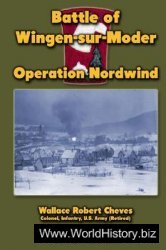(1969-1998). Organized at States Airport, Jersey, in September 1969 to offer FBO, aircraft and equipment sales, General Aviation Services, Ltd., founded by Michael J. H. Collett, begins air taxi flights to England and the other Channel Islands, in 1970. Employing a fleet made up of a Cessna 310, 336, and 337, nonscheduled flights continue apace in 1971-1973.
As many charter flights are made to the French coast, the airline, when officially named in 1974, is christened Air Atlantique, Ltd. spelled in the French manner. Totally rebuilt during 1975, a former Hunting Surveys, Ltd. Douglas DC-3 begins flying on the carrier’s behalf in 1976.
The company is reorganized into two divisions in early 1977. The Air Atlantique, Ltd. section will emphasize international all-cargo charter flights, while Air Corbiere, Ltd. will fly passengers. A second DC-3 expands the number of contract flights performed.
New investment is found in 1978 and Air Atlantique, Ltd./Air Corbiere, Ltd. is half-owned by General Aviation Services, Ltd. Michael Collett continues as chairman, 12 employees are hired, and a fleet of 3 Douglas DC-3s is assembled to complement the 3 Cessna 310s already on hand. Enplanements for the year total 1,536.
Airline employment jumps 50% in 1979 to 18. One DC-3 and one C-310 are withdrawn in favor of two DC-6A/Bs, acquired from Green-landair, which are the first of their type to enter British registry in 15 years, and two Piper PA-23 Aztecs. The oil crisis requires elimination of the DC-6s; one is leased to a South African firm and the other is scrapped by year’s end.
On October 29, the company joins the Royal Mail program known as “Spokes from Speke,” flying a DC-3 each night from London (STN) to the sorting hub at Liverpool (Speke Airport) and back to Stansted for distribution.
Customer bookings increase 36% to 2,400. Operating income is $2.2 million and leaves a net gain of $250,000.
The workforce is increased to 36 in 1980 and customer bookings reach 7,800. To generate capital, several newspaper delivery and post office contracts are accepted and executed. With the removal of the DC-6Bs, additional DC-3s are now purchased.
The employee population is increased by 10% in 1981 to 40 and the fleet now includes 7 DC-3s and 3 Cessna 310s. An operations and maintenance base is occupied at Blackpool and renewed emphasis is placed on nostalgia-generating flight-seeing operations. Passenger boardings swell 2.5% to 8,000 and revenues reach $1.8 million. Profits are $400,000 (operating) and $110,000 (net).
Operations continue apace in 1982-1983. By 1984, the company is spread out much too thinly: maintenance and engineering are at Exeter, headquarters are on Jersey, and aircraft are based at Jersey, Blackpool, London (CTN), Glasgow, Newcastle, Shannon, Belfast, and the Dutch city of Maastricht.
To somewhat reduce the costs incurred with this situation, the company is divided into two divisions: Air Atlantique, Ltd./Air Corbiere, Ltd. and 2 DC-3s are left on Jersey while the new Atlantic Air Transport, Ltd., with 6 DC-3s is moved to London (STN) in 1985. There, it takes over the facilities of Instone Airlines, Ltd. as well as its Bristol Freighter, the last of the type outside of Australasia.
To celebrate the fiftieth anniversary of the DC-3 and the sixtieth of Northwest Airlines, a DC-3 is repainted in Northwest livery and joins a B-747 Jumbojet from the American major in a unique fly over of the North Weald air show.
By 1986, the carrier is required to move again, this time to the airport at Coventry. A hangar and office complex is occupied and a flight school, Atlantic Flight Training, is opened.
Modified to dispense spray, 2 DC-3s and 5 Britten-Norman BN-2 Islanders are employed to honor a contract with the U. K. government’s marine oil pollution control service. Enplanements are 27,424.
The workforce is increased by 31% in 1987 to 55 and the fleet now includes 1 DC-6A/B named Jimmy the One, 6 DC-3s, 5 Britten-Norman BN-2 Islanders, and 1 Cessna 310. The big Douglas transport, acquired from a Detroit company, is placed into service on charter routes in March. The marine oil pollution control fleet is expanded by 5 DC-3s and 2 Islanders.
Passenger boardings jump 14.3% to 32,000 and freight increases 31.3% to 613,000 FTKs. Revenues total $2.9 million and expenses are held low enough to allow an operating profit of $900,000 and net gain of $300,000.
The employee population grows by 11.1% in 1988 to 200 as a pair of leased British Aerospace BAe 748-B2s are purchased and employed to inaugurate scheduled services to the Channel Islands. The over-water experiment is a failure as customer bookings actually decline.
The Channel route is given up in 1989 and the leased turboprops returned. General Aviation Services reacquires full shareholding. The company works to expand its flight-seeing and freight business. Additional scheduled and charter passenger and cargo flights throughout the U. K., Europe, Africa, and the Middle East. Headquarters are transferred to Coventry Airport in the West Midlands and Chairman Collett’s fleet is much improved, despite the removal of the Bristol Freighter.
Company employment is increased by 6.1% in 1990 to 105 and the fleet now includes 2 DC-6As, 8 DC-3s, 2 DC-3Fs, and 7 Cessnas.
Still, largely because of the slowdown in traffic at the time of Operation Desert Shield, passenger boardings decline 11.1% to 12,000. A total of 7.8 million FTKs are hauled. The year is, however, profitable. On revenues of $15 million, an operating profit of $4.5 million is generated along with net gain of $1.1 million.
Ten more workers are hired in 1991. Customer bookings dip 2.2% to 4,500 and freight falls down to 1.75 million FTKs. Revenues ascend to $16 million and allow an operating profit of $3.5 million and net gain of $1.2 million.
In 1992, Chairman Collen and Managing Director James Foden oversee a workforce of 130 and a fleet 2 DC-6As, 8 DC-3s, 3 DC-3Fs, 2 Cessna 406s, and 2 Cessna 310s. A Fairchild Metro III is acquired. Frequencies on the Coventry-Gloucester route are increased while new services are offered from Jersey and Guernsey to Liverpool, Swansea, and Rennes. In October, the “Spokes from Speke” program is revised becoming Royal Mail Skynet.
In 1993, the company is reformed into a holding company, Atlantic Air Transport, Ltd., and splits its passenger and freight operations into two operating subsidiaries. Air Atlantique, Ltd./Air Corbiere, Ltd. becomes Atlantic Airways, Ltd. and Atlantic Air Transport, Ltd. becomes Atlantic Cargo, Ltd. Air Atlantique Reconnaissance takes responsibility for maritime patrol and Pollution Control takes over environmental work.
In its most spectacular service to date, the marine oil pollution control DC-3 fleet of the new Pollution Control division is called upon in January to battle the pollution caused when the tanker Braer is wrecked in Scotland’s Shetland Islands.
In a step away from its reliance on piston-engine freighters, the carrier orders a pair of Lockheed L-188CF Electras; the first arrives from the U. S. in November, after having been recalled from ALM Antillean Airlines, N. V. It enters service before Christmas.
The second Electra, leased from Zantop International Airlines, arrives in January 1994. Early in the year, company DC-3s fly spare parts to Ireland to assist a stranded B-767 and later, during the summer, convey sightseers over the beaches of Normandy. Three vintage aircraft are acquired in the fall for use on the air show circuit—a Scottish Aviation Twin Pioneer 3 and 2 Avro Shackleton Mk. IIs.
In addition to these aircraft, the fleet at year’s end includes 8 DC-3s, 2 DC-6A/Bs, 2 Electras, alShorts 360, 1 Piper PA-31-350 Navajo Chieftain, 2 Islanders, 3 Cessna 310s, 2 Cessna 402s, 3 Cessna 404s, 2 Cessna 172s, 2 Cessna 152s, 1 Auster Jl, and 1 Fairchild-Swearingen Metro III, the only one on the U. K. civil register.
A third L-188CF is acquired in early 1995 as the company undertakes European nighttime freight services for DHL, Ltd. In addition, a Lockheed L-100-30 Hercules is wet-leased from Safair (Pty.), Ltd. It is employed to fly ad hoc cargo around Europe. During the summer, it also provides support for the motor-rally team camps of the Rallye Granada-Dakar scattered about the Mauritania desert.
Airline employment grows to 148 as operations continue apace in 1996. The fleet includes 4 leased Electras, 9 DC-3s, and 1 each Metro III, Cessna 500 Citation I, and Cessna 406 Caravan II. The DC-6s are converted into quick-change models, able to change swiftly back and forth between freighters and pollution control aircraft.
The reconnaissance division is sold and the Pollution Control unit is folded, with the company now operates marine pollution control reconnaissance under contract to the U. K. Department of Transport.
In early 1997, the new Air Atlantique Historic Flight division is created. The DC-3s, together with a newly acquired Scottish Aviation Twin Pioneer, are transferred to it. Special services, air show appearances, and historic preservation activities are the specialty of the new unit.
The fleet of the parent organization is increased by the addition of another Electra, an L-188AF purchased in June from Fred Olsens Flyselskap, A. S.
A total of 4.1 million FTKs are operated during the year.
The Coventry-based company changes its corporate identity once more. At the end of March 1998, its passenger and cargo operations are combined as Atlantic Airlines, Ltd. Non-airline business, including Air Atlantique Historic Flight, are marketed under the Air Atlantique, Ltd. name. A new livery is introduced.
When Hunting Cargo Airlines, Ltd. is sold in midyear, its 3 L-188Cs are purchased by Atlantic, 1 for parts and the other 2 for revenue service once they have undergone heavy maintenance.
Through August, a total of 7.03 million FTKs are operated.
ATLANTIC AIRLINES, LTD.: Coventry Airport, Coventry, England, CV8 3AZ, United Kingdom; Phone 44 (1203) 307 566; Fax 44 (1203) 639 037; Http://www. randburg. com/fa/atalntic. html; Code NL; Year Founded 1998. Atlantic Air Transport, Ltd., which has operated under a number of titles during its business life, is reformed again in March 1998. Under the direction of Chairman Michael Collett, the company’s passenger air transport and all-cargo subsidiaries are combined under the present name. Employing 5 Lockheed L-188CFs and 2 Douglas DC-6s, the airline flies charters throughout the U. K. and northern Europe.
The non-airline operations, including contract maritime reconnaissance and pollution control, together with the DC-3s of the newly formed Air Atlantique Historic Flight, are flown under the name Air At-lantique, Ltd., one of the company monikers previously employed.
In addition, an affiliated company, Highland Airways, Ltd. is established at Inverness Airport, Scotland, to provide air charter and aviation services, and to provide training with a flight school operation.
Enplanements during the 12 months total 45,000, while cargo traffic climbs 19.5% to 4.92 million FTKs.
Former AB Airlines, Ltd. Managing Director Tony Auld becomes deputy group managing director in mid-November.
The carrier nearly doubles its freight traffic in 1999, operating 8,125,000 FTKs.
Under a contract with Air Littoral, S. A., the company stations an L-188AF at Marseilles in February to operate nightly Air Littoral Express mail and parcel roundtrips to Paris (CDG).
The fleet is upgraded in the first week of May by the addition of a Convair 440 freighter previously operated by Argo Air International, S. A. The only one of its type flying in Europe, the Convairliner is employed both for cargo and as an air show display.
With the increase of its Electra fleet to 9, the company is able to station an L-188AF at Belfast International Airport on August 1 to undertake nightly express parcel flights to Coventry on behalf of Mayne Nickless Express. The company is now the world’s largest Electra operator.
Later in the month, Atlantic and its various divisions, stage an impressive Conventry air show. Present are the DC-6A and CV-440, as well as at least 7 DC-3s, which, at one point, put on a formation flyby for spectators.
ATLANTIC AIRWAYS: United States (1923). Atlantic Airways is set up at Hingham, Massachusetts, in early 1923 to offer flights south to Newport, Rhode Island and New York City. Employing 2 Curtiss HS-2L, 1 Curtiss MF, and 1 Aeromarine 40 flying boat, revenue services duly commence and when the flying season ends in the fall, a total of 1,701 passengers and 1,500 lbs. of freight have been transported.
The company is unable to continue in 1924.




 World History
World History









